
Haverhill is a city in Marshall County, Iowa, United States. The population was 165 at the time of the 2020 census.

William Deering was an American businessman and philanthropist. He inherited a woolen mill in Maine, but made his fortune in later life with the Deering Harvester Company.
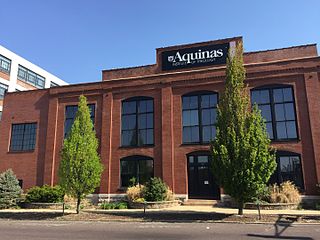
Standard Adding Machine Company was founded in the early 1890s in Illinois and was the first company to (successfully) release a 10-key adding machine. The machine was a breakthrough for its time because it dramatically modernized computing. Earlier key driven adding machines, like the comptometer, featured eight or more columns of nine keys, which made them cumbersome and costly and their operators prone to mistakes. The 10 keys were set on a single row.

The Cyrus McCormick Farm and Workshop is on the family farm of inventor Cyrus Hall McCormick known as Walnut Grove. Cyrus Hall McCormick improved and patented the mechanical reaper, which eventually led to the creation of the combine harvester. The farm is near Steele's Tavern and Raphine, close to the northern border of Rockbridge and Augusta counties in the U.S. state of Virginia, and is currently a museum run by the Virginia Agricultural Experimental Station of Virginia Tech. The museum has free admission and covers 5 acres (2.0 ha) of the initial 532-acre (215.3 ha) farm.
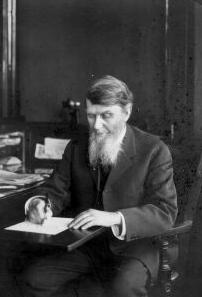
John Mohler Studebaker was the Pennsylvania Dutch co-founder and later executive of what would become the Studebaker Corporation automobile company. He was the third son of the founding Studebaker family, and played a key role in the growth of the company during his years as president, from 1868 until his death in 1917.
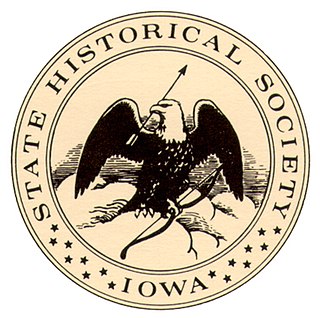
The State Historical Society of Iowa (SHSI), a division of the Iowa Department of Cultural Affairs, serves as the official historical repository for the State of Iowa and also provides grants, public education, and outreach about Iowa history and archaeology. The SHSI maintains a museum, library, archives, and research center in Des Moines and a research library in Iowa City, as well as several historic sites in Iowa. It was founded in 1857 in Iowa City, where it was first affiliated with the University of Iowa. As the organization grew in size and collections, it became a separate state agency headquartered near the Iowa Capitol in Des Moines.

The Severin Miller House and barn are historic buildings located in the West End of Davenport, Iowa, United States. They were listed together on the National Register of Historic Places in 1983.
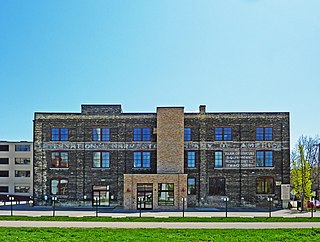
The McCormick–International Harvester Company Branch House was built in 1898 in Madison, Wisconsin as a distribution center for farm implements of the McCormick Harvesting Machine Company. After McCormick merged into the International Harvester Company in 1902, the building was expanded and served the same function for the new company. In 2010 it was added to the National Register of Historic Places.

Sahuaro Ranch was founded in 1886, by William Henry Bartlett, a native of Illinois. The ranch, located north of what eventually became the city of Glendale, Arizona, was rich in figs and other fruit orchards, vineyards, and fields of alfalfa. The ranch has all of its historical structures restored, and the "Sahuaro Ranch Park" is administered by the Parks and Recreation Department of Glendale.

The Louden Machinery Company was an American engineering, manufacturing and design company based in Fairfield, Iowa. Founded by William Louden, the company in its early years manufactured and sold the patented hay carrier that he invented in 1867. The company later expanded into a wide variety of farm equipment and, in 1906, began an Architecture Department that reportedly designed more than 25,000 barns from 1906 to 1939. During World War I, Louden's monorail equipment carrier began to be applied to industrial and military applications. By the 1920s, much of the company's revenues were derived from industrial applications of its monorail equipment carriers.

The J.J. Deal and Son Carriage Factory was the largest factory built in Jonesville, Michigan. It is the only 19th century factory remaining in the City. It is located at 117 West Street. On August 1, 2012, the building was added to the National Register of Historic Places. The building was redeveloped into the Heritage Lane Apartments in 2015.
Louis Frederick Dietrich was an automobile dealer and politician in Ontario, Canada. He served as mayor of Waterloo from 1929 to 1930.

The Job A. and Rebecca E. McWaid House is a historic residence located in Atlantic, Iowa, United States. Ohio native Job McWaid settled in Atlantic in 1869. He was involved in the industrial, commercial and political development of the town. He entered a partnership in a blacksmith and wagon shop, before he expanded into an agricultural implements, grain and coal. He then established Atlantic Packing House and the Atlantic Canning Factory with another investor, before buying him out. The American Civil War caused him to change his political affiliation to the Republican Party. McWaid served three terms on the Atlantic City Council before serving two terms as mayor. The city's sewage system, the Carnegie library, and other municipal improvements were initiated during his public service. This two-story, frame, Queen Anne house was built around 1875, and McWaid moved here in 1883. It was listed on the National Register of Historic Places in 1984.
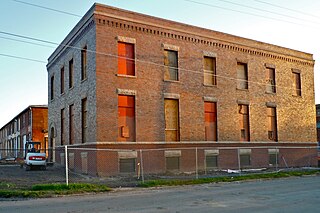
The Spaulding Manufacturing Company is a complex of historic buildings located in Grinnell, Iowa, United States. Vermont native H.W. Spaulding settled in Grinnell in 1876 to open a blacksmith and wagon repair shop. Not long after, he started to manufacture wagons. Because of his modest success he entered into a series of partnerships over the years. The oldest building in the complex was completed around 1880, and the company grew to a complex of five buildings. The last building was completed in 1910, and has a masonry chimney that originally rose to 110 feet (34 m) high. All the buildings are brick construction, and they range in height from two floors to three floors. As modes of transportation began to change, so did Spaulding. The company began manufacturing automobiles. They were one of several early automobile manufacturers that had existing operations that manufactured bicycles, wagons, and carriages. They went out of business in 1929. Since that time the facility has housed a variety of small-scale manufactures, and even a veterinary clinic. Part of the plant was renovated and now houses the administration offices for the City of Grinnell and displays for the Iowa Transportation Museum, which is now closed due to a variety of financial issues. The largest buildings of the manufacturing complex were renovated and converted into the Spaulding Lofts apartments. The complex was listed on the National Register of Historic Places in 1978.

The Joseph "Diamond Jo" Reynolds Office Building and House is a historic building located in McGregor, Iowa, United States. Joseph "Diamond Joe" Reynolds was a New York native who started working in a gristmill in the 1840s. As the grain belt moved to the west, he moved with it, settling in Chicago in the 1850s and McGregor around 1860. Because of difficulties accessing steamboats to ship grain down the Mississippi River, he established the Diamond Jo line in 1866. It grew to become a major player in the transportation industry. He had its headquarters moved from Fulton, Illinois to Dubuque, Iowa in 1874. By the late 1870s railroads had taken over as the primary means of shipping grain, and Reynolds turned his attention to passenger boats. He had this combination office and residential building constructed in 1885. Reynolds died in 1891 and his widow sold the building before her death in 1895. It has subsequently housed grain trader offices, a billiard parlor, the post office, a winery, shops, and apartments.
The Philip and Anna Parrish Kirchner Log House is a historic building located north of Peterson, Iowa, United States. The Kirchners moved from the Albany, New York area to southwest Clay County in 1867, and built this log house the same year. It is located on part of the property that his older brother A.J. "Gust" Kirchner claimed in 1856. They were among the first Caucasian settlers in the county. A summer kitchen was later added to the west side of the house and a blacksmith shop onto the north side. The Kirchners lived here until they built a two-story frame house nearby in 1882. Philip's sister, Charlotte Kirchner Butler, bought the property after his death and restored the log house to its original condition around 1910, which meant the removal of the summer kitchen and the blacksmith shop. The property remained in the family until at least the 1990s, and housed a display of family artifacts. The house was listed on the National Register of Historic Places in 1993.

The Red Ball Garage, also known as the Ed Neil Garage, is a historic building located in Swedesburg, Iowa, United States. The building is located along what was known as the Military Road. Because of the marshy land in the area, wagons and buggies had to be pulled out of the mud. In 1913 the road became a part of the Red Ball Route, a highway that linked the Minneapolis/St. Paul area with St. Louis. It received its name from the highway signs used to mark the route. The highway was paved from 1929 to 1930, and later became U.S. Route 218 until it was moved to the east as a four lane-highway in the 1990s.

Finstad's Auto Marine Shop is a former boat repair shop in Ranier, Minnesota, United States. It was built in 1911 on the south shore of Rainy Lake, and preserves its original belt-driven machinery. George Finstad acquired the shop in 1924 and continued to provide maintenance and storage services for fishermen, residents, and vacationers there for just over fifty years. The building was listed on the National Register of Historic Places in 1983 for its local significance in the themes of entertainment/recreation and transportation. It was nominated for its association with the early tourists and summer residents of the Rainy Lake region, a significant factor in Koochiching County's early-20th-century development.
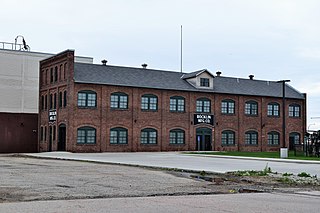
Albertson and Company-Rocklin Manufacturing Company is a historic building located in Sioux City, Iowa, United States. Completed in 1912, the building initially housed Automatic Valve Seating Mach Co. They reorganized in 1914 and became the Sioux City Machine and Tool Company, which produced spark plugs and tire valves. The company failed four months later and the shop foreman, Frans Oscar Albertson, formed Albertson & Co. and took over the plant. During World War I they supplied 6,000 piston rings and repair tools for munition plants for Canada. Albertson never owned the building and moved his operations to another Sioux City building in 1920. The company went on to become the largest manufacturer of portable electronic and air tools in the world. They changed their name to Sioux Tools Inc., and in 1993 they became a division of Snap-On Tools. Their manufacturing facility moved to North Carolina in 2001.




















